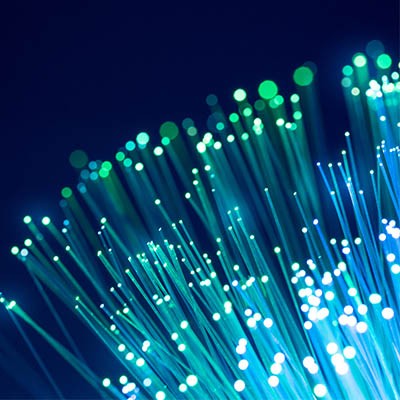The Internet is more than a piece of technology, it fuels huge swaths of the modern world. The economic benefits of the Internet are hard to estimate, but Cisco has tried, giving it a $19 trillion valuation, or about 21 percent of the total amount of money that is currently available in the world. So, if you have a resource that is valued at almost a quarter of humanity’s total monetary worth, you try to maximize the use of it.
Fiber optic cable is a network cable that contains small strains of glass fiber. Those glass strains are covered by an insulated casing. They transmit data through light. They are often not much thicker than a human hair. They are made up of the core, which is the pathway for light to travel. The core is surrounded by a layer of glass called cladding that keeps light in via reflection to avoid signal loss and keep transmissions true as the wire bends.
Since the transmission of light is so fast, data can travel long distances quickly. These cables provide higher bandwidth and can maintain the integrity of data transmission over long distances. Today, this technology supports much of the world’s Internet, cable television, and telephone systems. Their main benefits include:
- Higher capacity data - The amount of data that a fiber optic cable can carry exceeds that of traditional copper cable. Fiber cables are rated at 10 Gbps, 40 Gbps, and 100 Gbps.
- Longer Distances - Since light travels for much longer distances without losing strength, there is less need for signal boosters.
- Less Interference - Copper cables require shielding to protect it from electromagnetic interference, but this shielding doesn’t always work. The physical makeup of fiber optic cables works to avoid this outside interference.
Most fiber optic cable is installed to run long-distance connections, there are some Internet providers that roll out fiber optics for direct access to customers. They are deployed the following ways:
- Fiber to the Premises (FTTP) - Fiber that is laid to support the use of media services to residential buildings.
- Fiber to the Building (FTTB) - Also called Fiber to the Block or Fiber to the Business - This is fiber optic cable that supports commercial buildings.
- Fiber to the Curb of Node (FTTC/N) - This is fiber cable that is laid to the node, while copper wires complete connections to customers.
- Direct fiber - Fiber that leaves the central hub and is attached directly to a customer. Some of the most expensive network cabling on the market.
- Shared fiber - Much like direct fiber, but at the end it’s split up to other customers.
Deploying fiber optic cable to your place of business is possible, but it is extraordinarily expensive. Due to the mounting costs associated with it, it may not be an option unless your provider is rolling out new infrastructure.
If you would like to learn more about the technology your business uses, and what kind of effect it can have on your business, return to our blog regularly.




Comments